The shrimp russula (Russula xerampelina complex), also commonly known as the crab brittlegill, is an edible mushroom with a powerful scent. It is widespread across North America and appears in early summer to winter, depending on the climate. Shrimp russulas are considered the best-tasting of all the Russula mushrooms.
Shrimp russulas might get confused with shrimp of the woods mushroom because of their common names. These are two very different mushrooms! Both are edible, though, and highly sought after by foragers. The confusion caused by both having “shrimp” in their name is an excellent example of how messy things can get when you rely solely on common names to identify mushrooms.
- Scientific Name: Russula xerampelina species complex
- Common Names: Shrimp Russula, Crab Brittlegill, Shellfish-scented Russula
- Habitat: On the ground in relationship with specific trees, depending on species
- Edibility: Edible
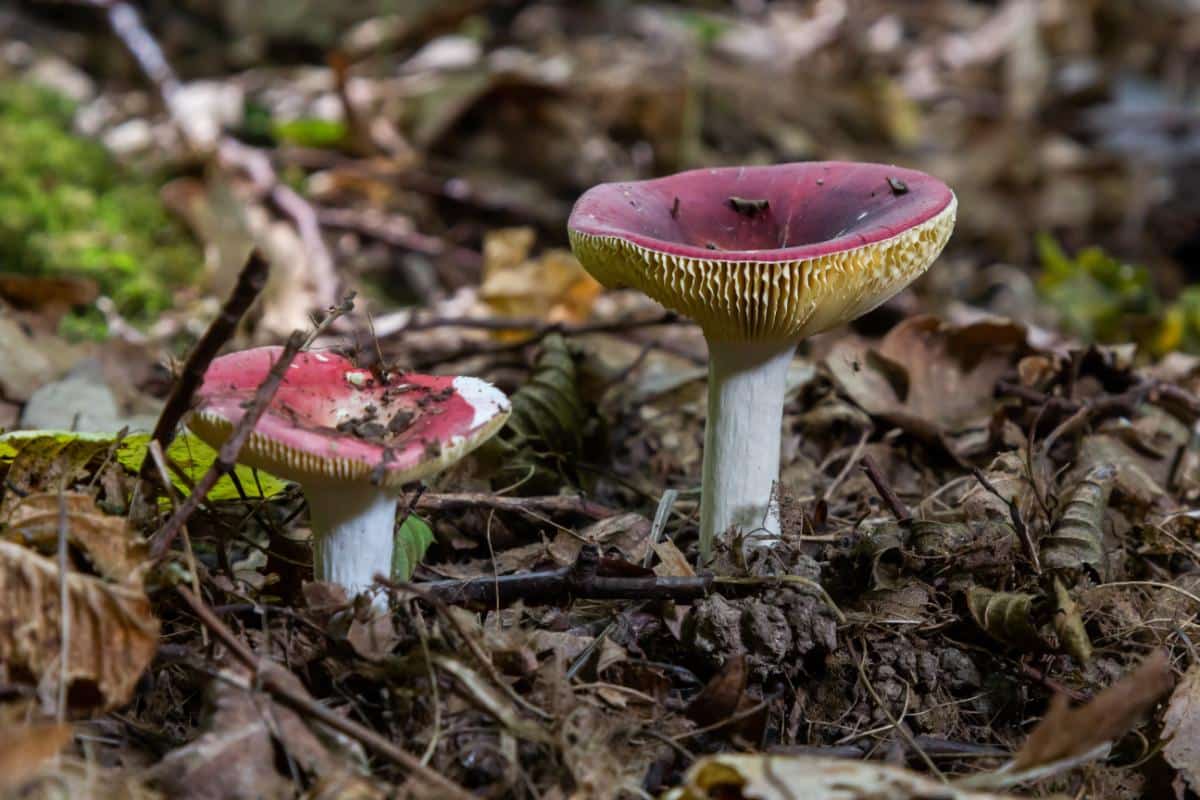
Jump to:
- All About The Shrimp Russula
- Shrimp Russula Identification
- The North American Shrimp Russulas (as described so far)
- Shrimp Russula Lookalikes
- Medicinal Properties of the Shrimp Russula
- Cooking With Shrimp Russula Mushrooms
- Where Does That Shrimp/Crab Smell Come From
- Common Questions About Shrimp Russula Mushrooms
All About The Shrimp Russula
Shrimp russulas are part of the massive Russula family of mushrooms. Russulas are also commonly known as Brittlegills. For centuries, it was thought all shrimp russulas were one species, Russula xerampelina. Recent studies, though, show that this species is only in Europe. This means all the mushrooms called shrimp russula in North America are actually different species. There is still a lot more work to be done in this group, but at the moment, there are four shrimp russula species listed in North America.
This guide describes the most common characteristics of the shrimp russula, which can be applied to the species as a group. When you’re out foraging, it may be challenging to determine which one you’ve found, but you can undoubtedly determine it is part of the shrimp russula species complex.
In most guidebooks and online sources, you’ll still see the shrimp russula under the Russula xerampelina name. Many have not updated their naming because it is still so convoluted. We use it here only because it is still so commonly identified as this in North America.
German botanist Jacob Christian Schaeffer first described the shrimp russula in 1770. He gave it the name Agaricus xerampelina since most gilled fungi belonged to the Agaricus genus at that time. The mushroom received its modern scientific name, Russula xerampelina, from Swedish mycologist Elias Magnus Fries in 1838. The name has Greek roots – xerampelina combines words for “dry” and “of the vine,” which describes the mushroom’s color similar to dried vine leaves.
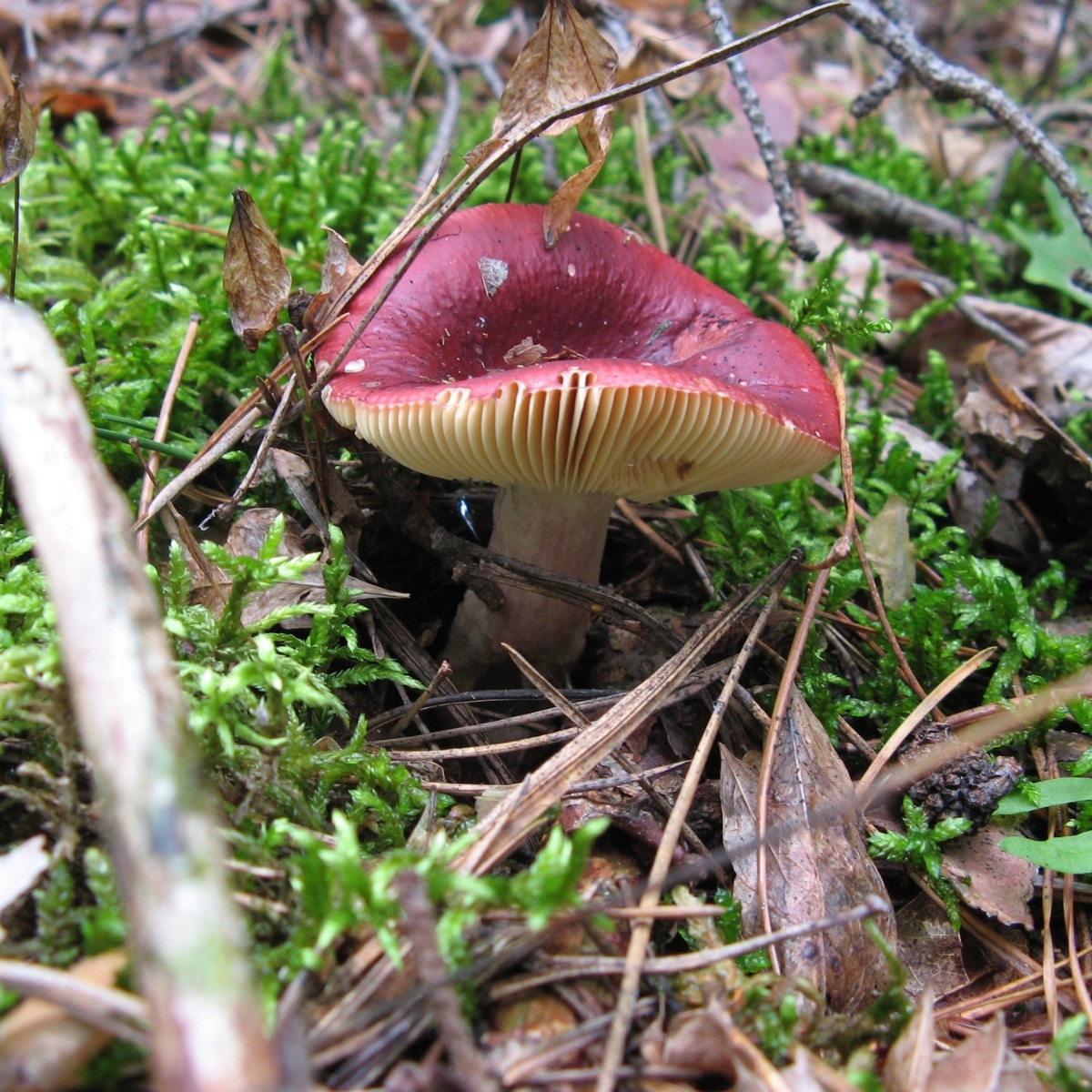
Shrimp Russula Identification
Season
Shrimp russula mushrooms appear from mid-August through late September.
Habitat
These mushrooms grow on the ground with specific tree hosts. The trees vary by species and can be hardwood or conifers. Shrimp russulas build mycorrhizal relationships with trees, and their growth is tied to the host.
Shrimp russulas grow from the ground, never from wood or trees. They often fruit in large scattered groupings, but you can also find them growing alone.
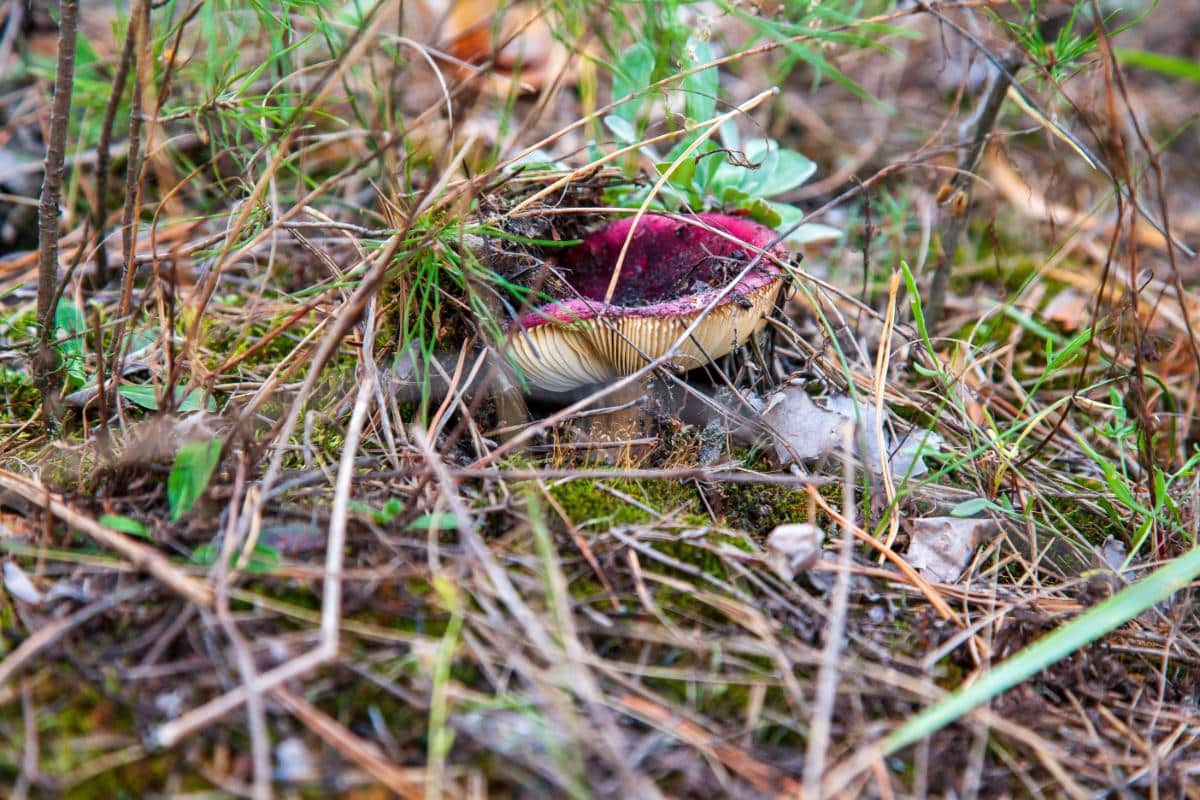
Identification
Cap
The cap is usually 2-6 inches in diameter but may reach up to 12 inches wide. The color varies from deep purple to wine-red to brown to olive to orangish. Coloring can vary quite a bit, even within a specific species.
The surface is smooth and becomes sticky when it’s wet. When the mushroom is young, the cap might also be slightly velvety. It starts out rounded or bell-shaped and then flattens as it ages. The center of the cap also sinks as the mushroom matures to create an indented center.
Gills
The gills are white to cream when the mushroom is young. With age, the gills turn yellowish. The gills attach to the stem and may run down it partway. They are moderately to closely spaced. When the gills are bruised, they turn brownish or yellow-brown.
Stem
The stem of the shrimp russula is 1.5-4 inches long and white. It may be all white or have pink or reddish blushing, especially at the bottom. It is equally wide the entire length. The stem discolors yellow when cut or scratched.
A key identification point with all russula mushrooms is the brittleness of the stem. It is dense and snaps off cleanly.
Taste and Smell
The mushroom’s shrimp-like or seafood odor is its signature trait. The smell is most noticeable in mature specimens or when the mushroom is dried. However, it is also usually significantly noticeable when the mushroom is fresh. This mushroom has a mild taste.
It’s important to note that quite a few people report not smelling the shrimp or seafood-like scent at all. Even after the mushroom has been identified and others report smelling it, even if only faintly. This could be for several reasons. It might be because not everyone has a strong nose game and may struggle to pick out the scent in fresh specimens, where it isn’t as strong.
Another strongly possible reason is that the mushrooms themselves vary widely in smell. Since this whole group is still being sorted out, it may be that there are some species within the complex that just don’t have a strong smell.
This must be mentioned because one of the top, key identifying features of this mushroom group is their smell. And, if the smell isn’t there or is barely discernable, identifying these mushrooms becomes much, MUCH harder.
Flesh Color and Staining
The flesh of the shrimp russula is white, and it stains brown or yellowish when handled. Sometimes, the staining is slow.
Spore Print
The spore print is cream to pale yellow.
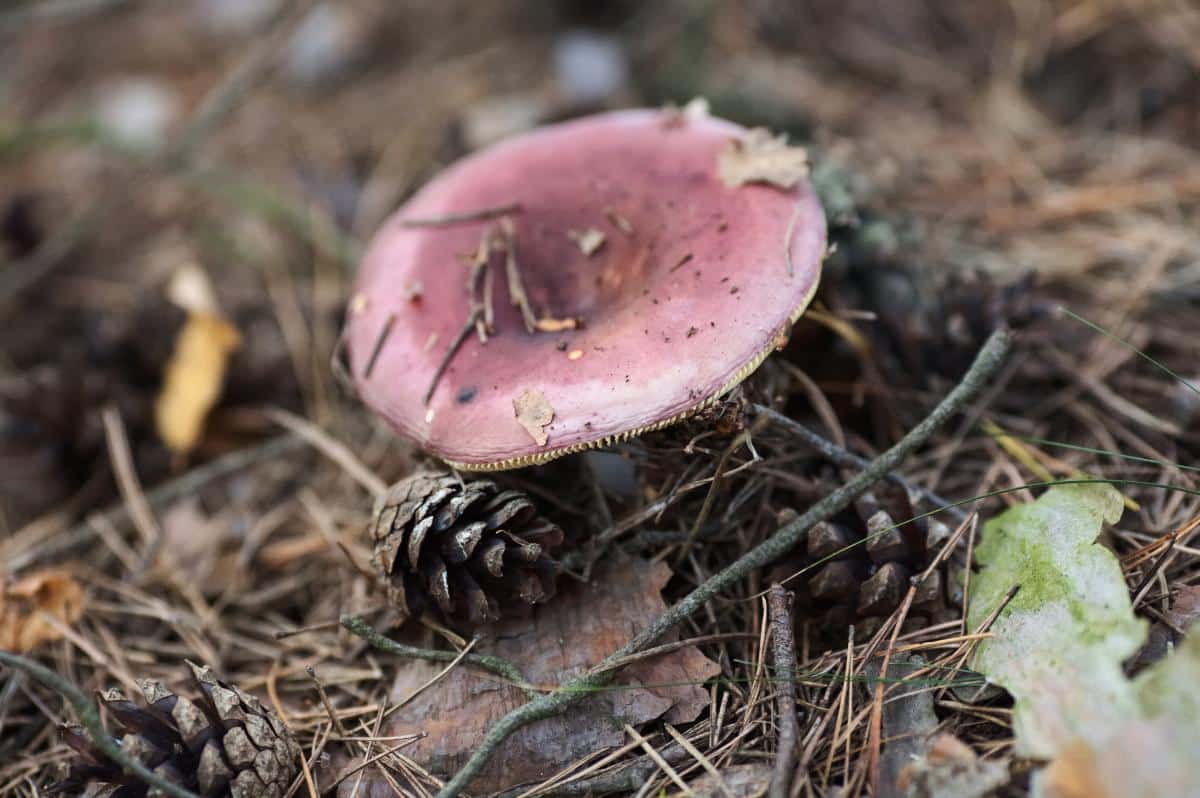
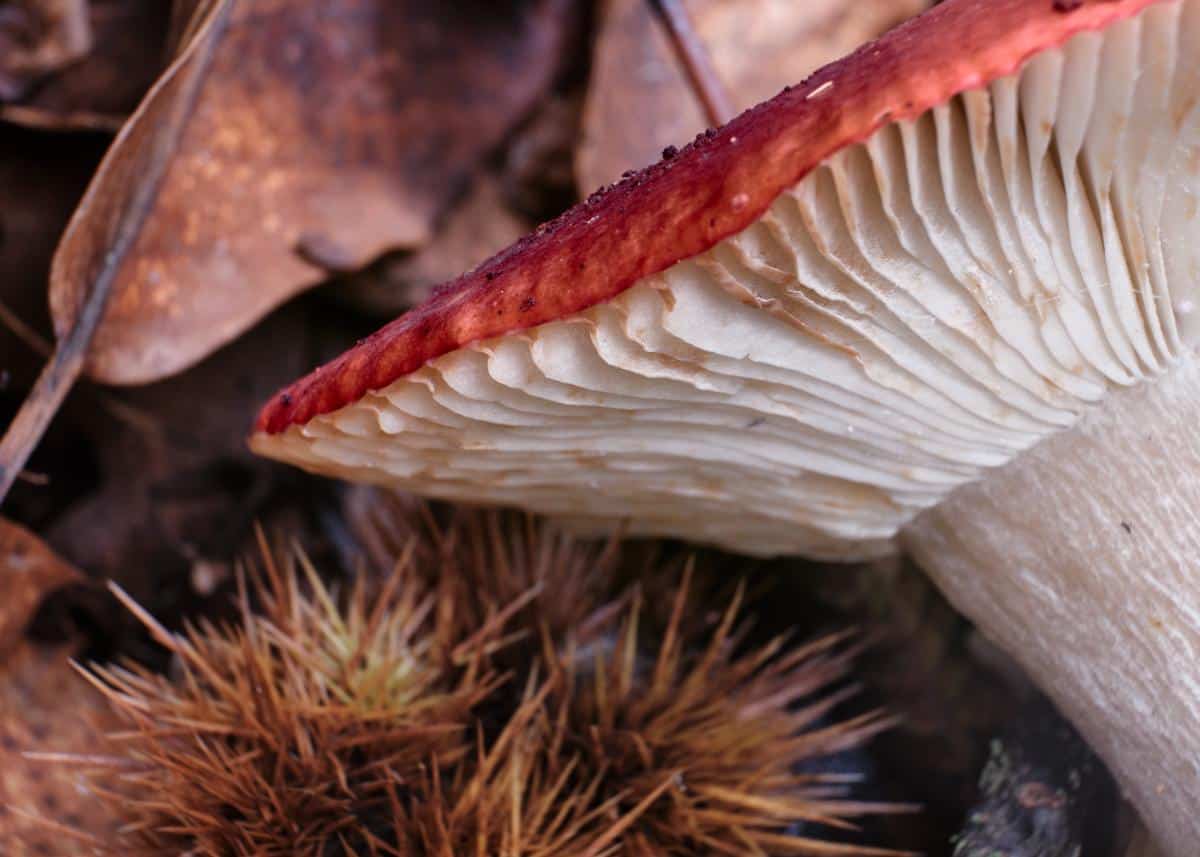
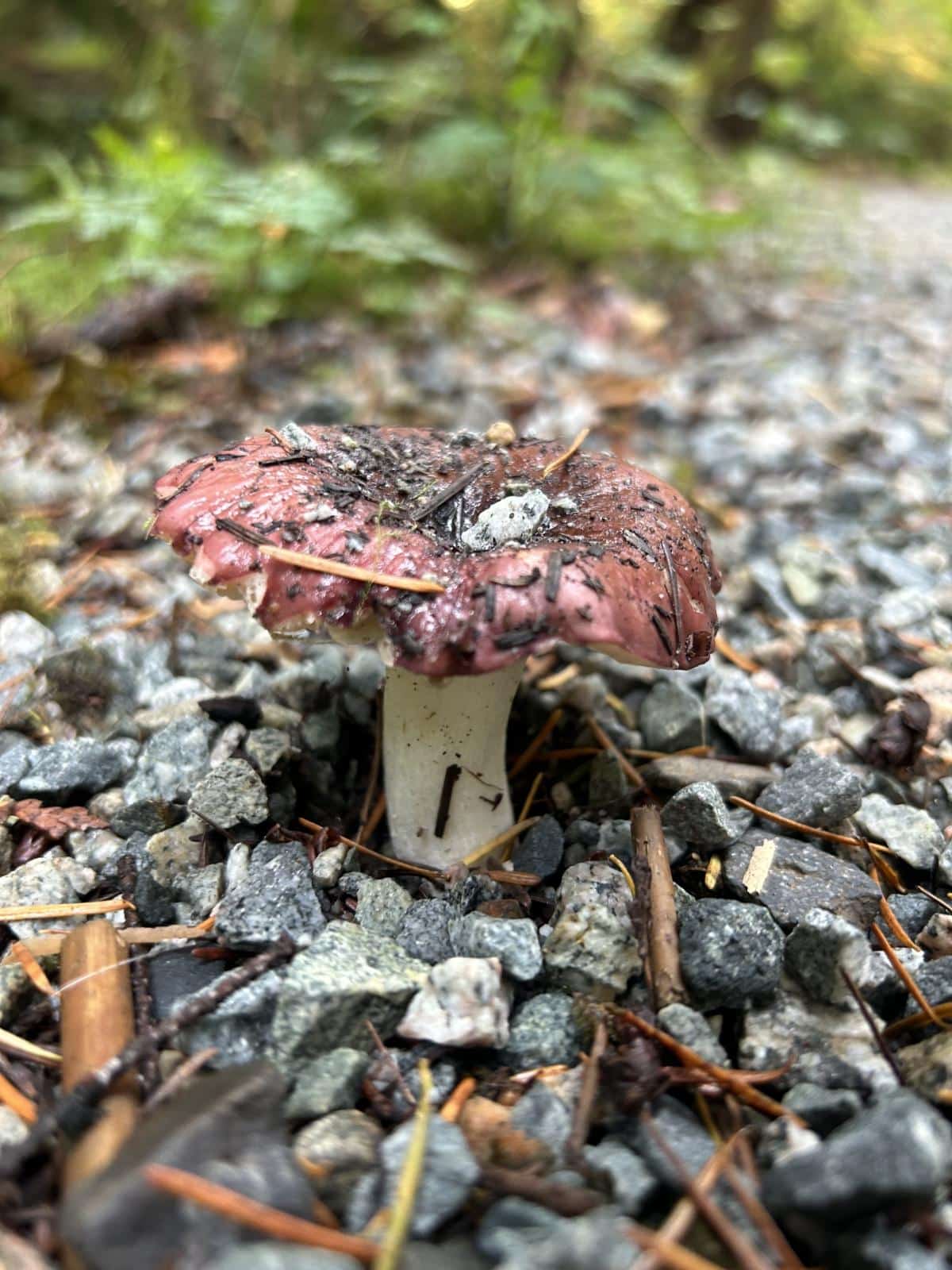
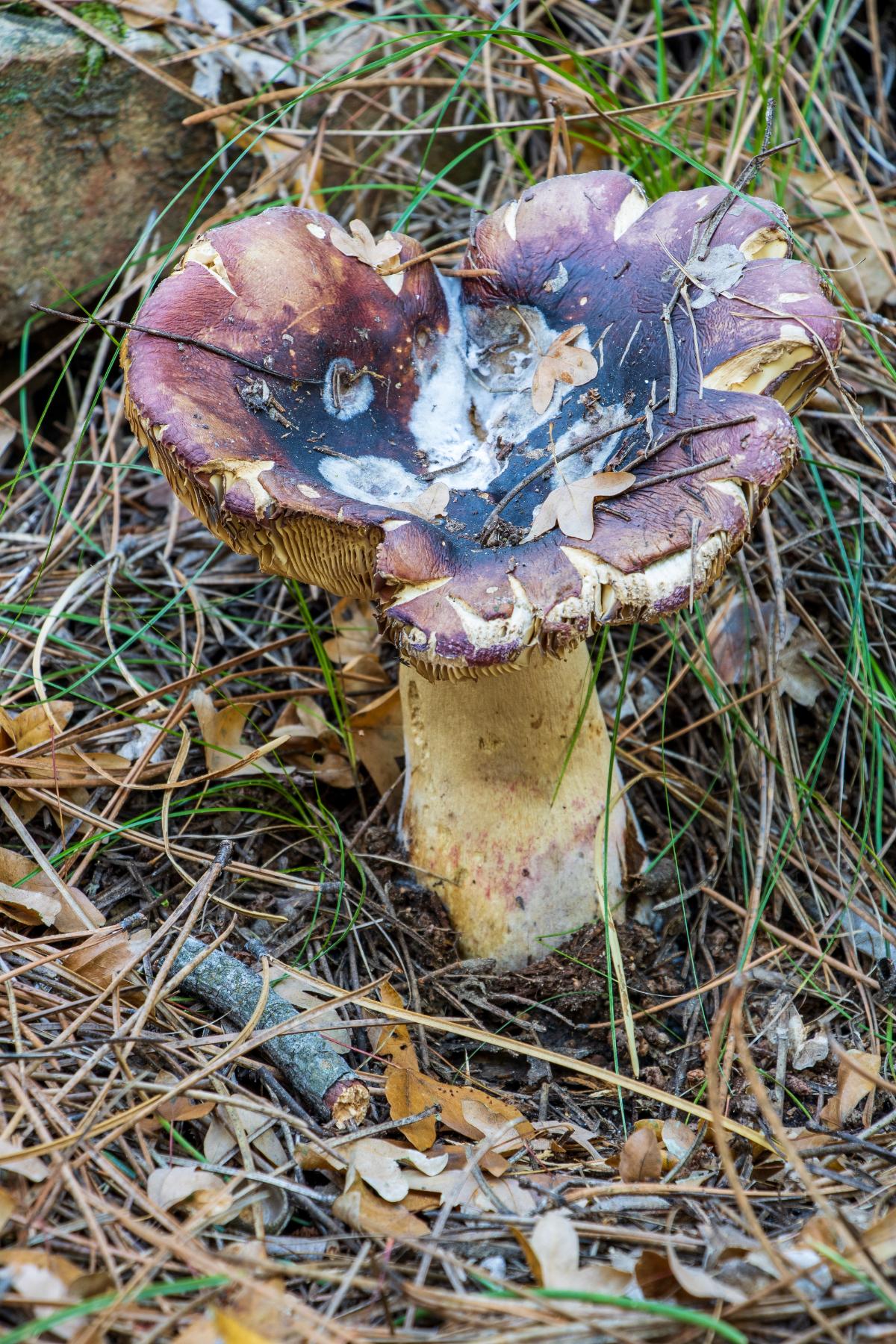
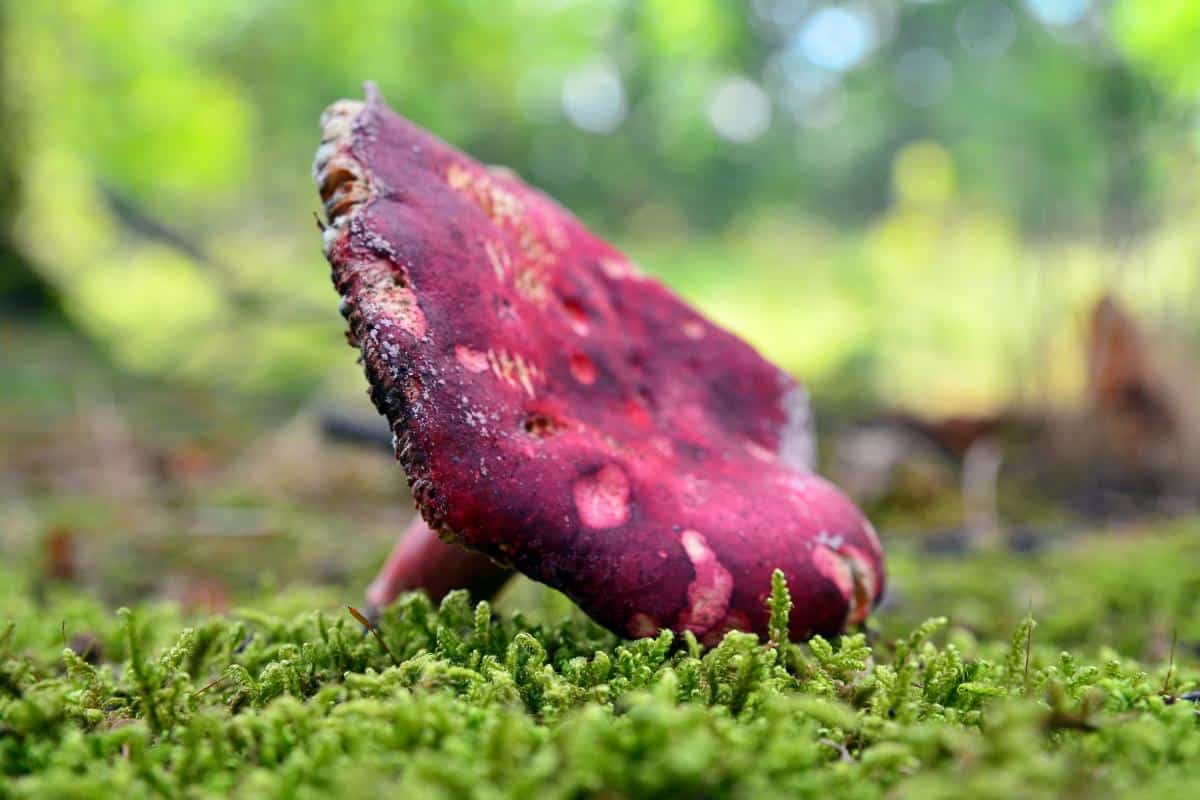
The North American Shrimp Russulas (as described so far)
You may find that none of your specimens match any of these species. This is because the species complex still needs work. In fact, you may find that the shrimp russula you find matches more of a European species. This is common since the European species are better described. It is likely that the European species that match your find is actually a North American species that hasn’t been fully described yet.
It is important for science and mycology to document any findings you have on iNaturalist or the Mushroom Observer. This helps researchers understand species range and ecology a lot better. Citizen science is extremely important in mycological studies!
- Russula squalida – This species usually has the traditional reddish purple cap, but it may also be paler red or mottled olive to tan. It grows in eastern North America and is probably associated with oaks.
- Russula fucosa – This shrimp russula has a red to reddish orange cap. It is found throughout eastern North America. It grows with beech and oak trees.
- Russula grundii – Unlike the other shrimp russulas, this species has a yellow cap. It has only been collected once from California, and there have been no reports of it since then. It grows with oak trees.
- Russula texensis – This species is extremely rare and only found in Texas, as far as is known. It has a purplish red cap and grows under oaks, beech, and loblolly pine.
Shrimp Russula Lookalikes
Milk Caps (Lactarius and Lactifluus)
Most milk cap mushrooms look almost identical to russulas. They are very commonly confused. Both species grow from the ground, usually have white or whitish gills, and have the same brittle texture. The big difference is that milk caps release a milky or clear liquid when the gills are cut. Shrimp russulas do not do this. In fact, no Russula mushrooms do this, so it is a good field test for species.
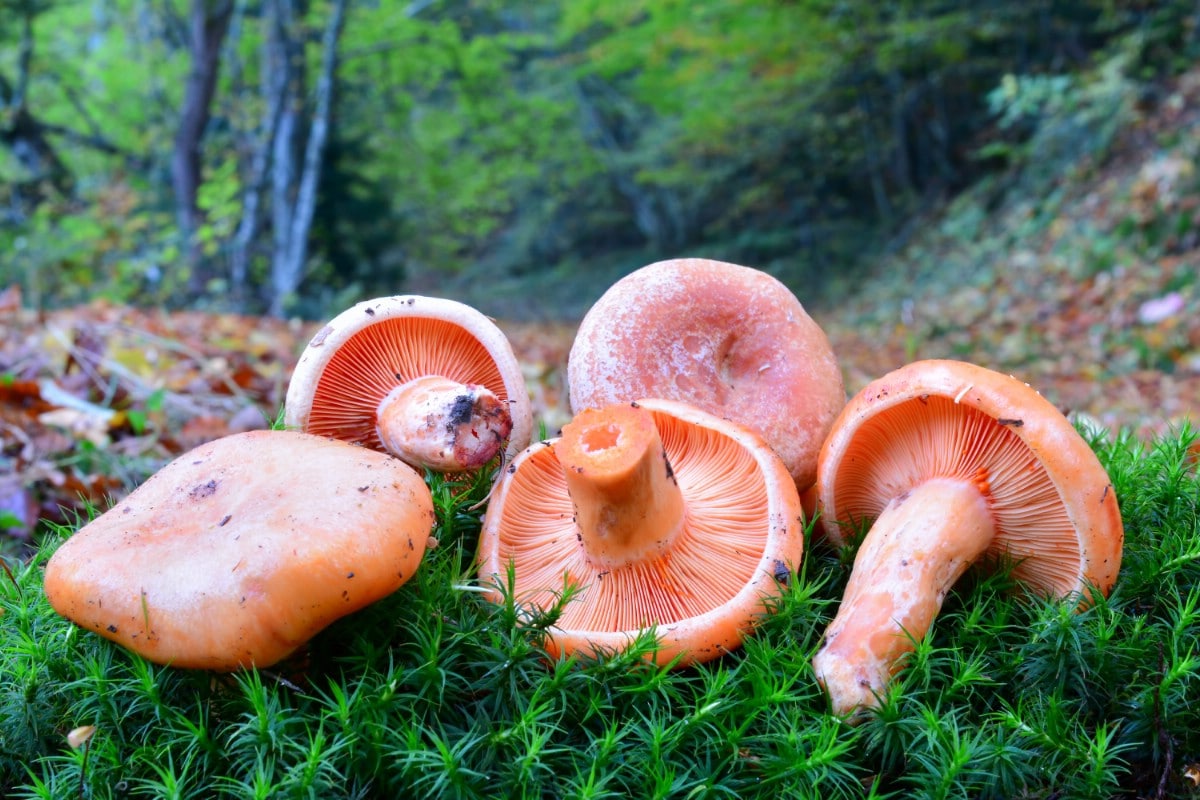
The Sickener (Russula emetica)
This is a red Russula species that looks very similar. The sickener only occurs in Europe, but there are related species in North America that are still being sorted out. These mushrooms won’t kill you, but they will give you severe gastrointestinal distress. Many people report that cooking removes the toxins from any problematic red Russula mushrooms, but it is up to the individual to decide whether they want to eat them or not.
There are several key differences that set the sickener and related red Russulas apart from the shrimp russula. The main thing is smell — the shrimp russula has a very distinctive seafood-like scent that other species do not have. The sickener and related species taste very spicy (it’s okay to do a nibble and spit test; just don’t swallow it). Shrimp russulas have a mild taste. Finally, the sickener does not bruise brown when handled.
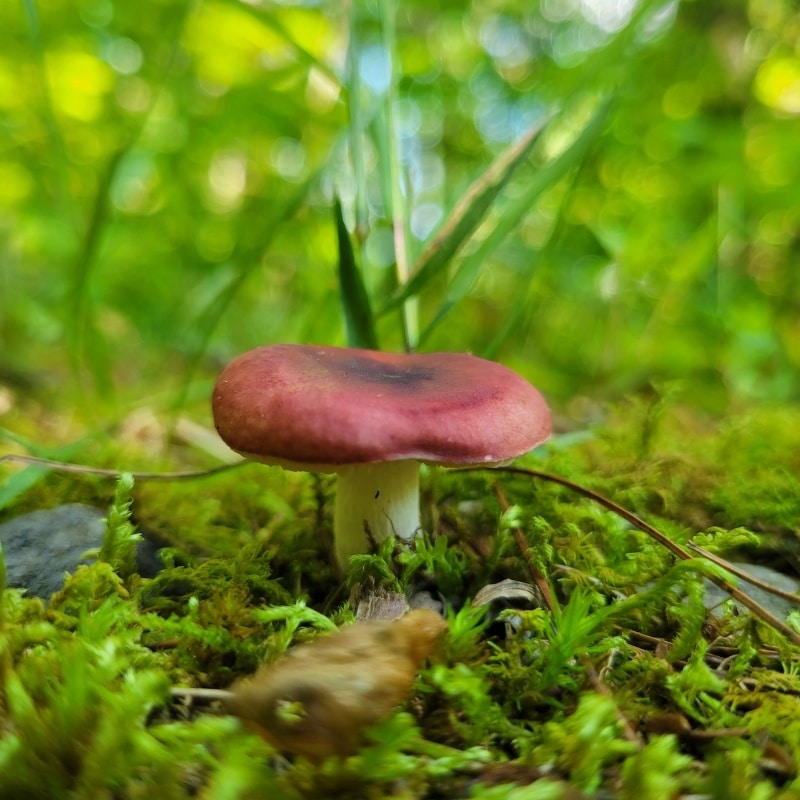
Other Red Russulas
There are many red-capped Russulas in North America (and over 100 red-capped Russulas in the world!). These mushrooms resemble the shrimp russula based on cap color, but they lack two vital identifying features: the brown staining reaction and the distinctive seafood smell. Here are a few (but not all):
- Rosy Russula (Russula rosea) has a red cap and pale yellow gills and grows with beech trees. The stem is usually flushed red but sometimes is pure white. It tastes extremely bitter. This species grows in northern temperate zones
- Darkening Brittlegill (Russula vinosa) has a red to wine-red cap that often fades to tan with age. The gills are white and widely spaced. The stem is white. This species has a mild flavor and is edible.
- Beechwood Sickener (Russula nobilis) is a widespread, peppery tasting mushroom that will make you sick if eaten. It also has a distinctive smell — it smells like coconuts! This mushroom grows with beech trees and has a deep red cap, white gills, and white stem.
- Russula paludosa has a light reddish to pink cap, white gills, and a white stem. The flesh tastes mild and it doesn’t have any smell. It grows with conifers, especially pines. This species is edible.
- Russula vinacea is common in Eastern North America. It has a reddish to purplish cap, white gills, and white stem. It fruits with oak and hickory trees. This species does not have a distinctive smell and the taste is either undistinctive or slightly bitter.
- Russula rubescens has a dull red cap, white gills, and a white stem. The flesh and stem of this mushroom blush red when handled or exposed to air. Over time, sometimes more than an hour, the flesh will turn blackish. It grows with hardwoods east of the Rocky Mountains.
- Russula occidentalis has a brownish or blackish brown cap but it can look almost purplish. The flesh turns red when bruised. The gills are white and it tastes mild to slightly bitter.
- Russula viridofusca, found in western North America, shares the shrimp-like odor but is yellowish-brown to reddish-brown instead of the typical wine-red purple of the shrimp russula.
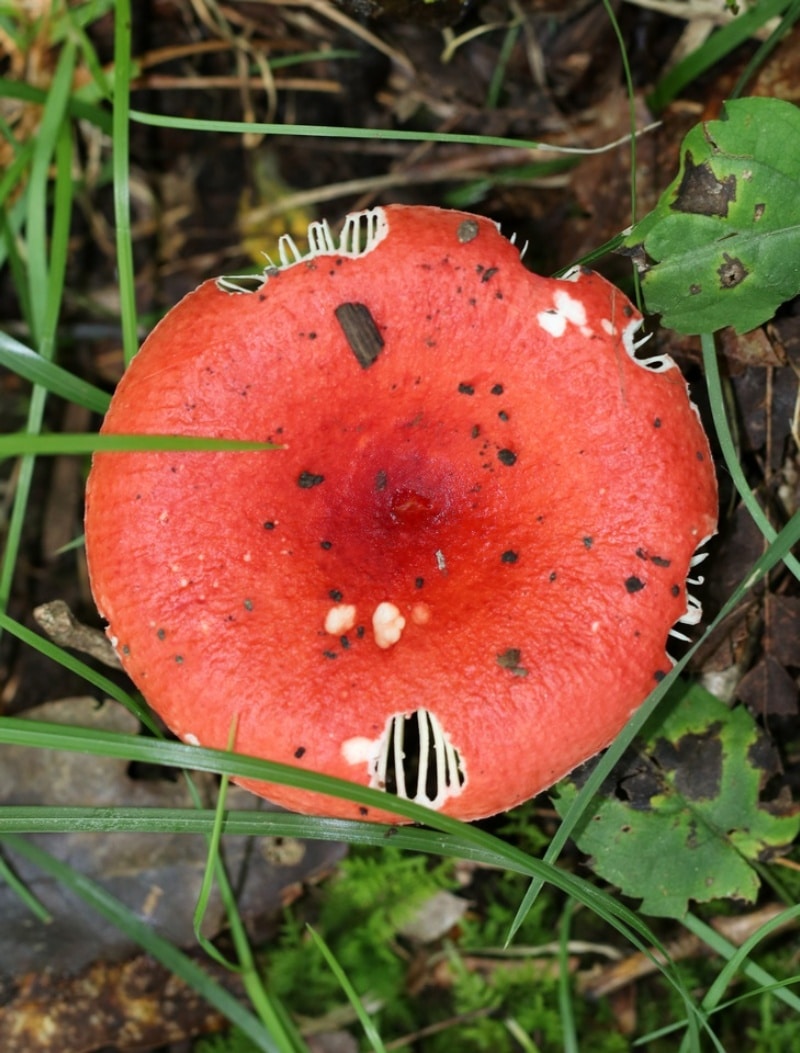
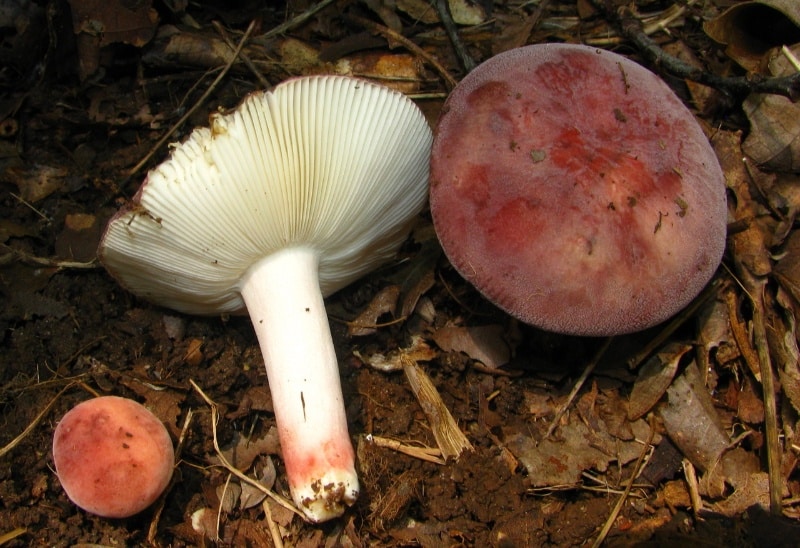

Medicinal Properties of the Shrimp Russula
The mushroom’s anti-tumor activity makes it really interesting. Studies show that polysaccharides extracted from R. xerampelina can stop certain cancers from growing. Lab tests revealed these compounds reduced Sarcoma 180 growth by 70% and Ehrlich solid cancers by 80% in test subjects. Scientists also found that this mushroom works against Plasmodium falciparum, a resistant strain of malarial parasite.
The mushroom’s polysaccharides can inhibit glucosidase and amylase activities, which could help manage blood sugar levels. They also show promising anticoagulant properties and can boost immune system responses.
Cooking With Shrimp Russula Mushrooms
Shrimp russula mushrooms are mildly sweet with a delicate umami undertone. They taste similar to fresh shellfish, particularly shrimp (hence the name!). The seafood-like taste and smell don’t go away with cooking, either. The flesh is firm and meaty.
Young specimens have the mildest taste, which makes them great for stuffing and broiling. These fresh caps stay firm when cooked at high temperatures. You’ll get fantastic results that keep the mushroom’s natural qualities.
Middle-aged specimens develop more of that shrimp-like flavor. They work really well as substitutes for seafood or meat in many dishes. You can create some creative vegetarian versions of classic seafood recipes.
Older or dried specimens have a stronger fishy flavor. These are perfect for Asian dishes or recipes that need intense umami flavors.
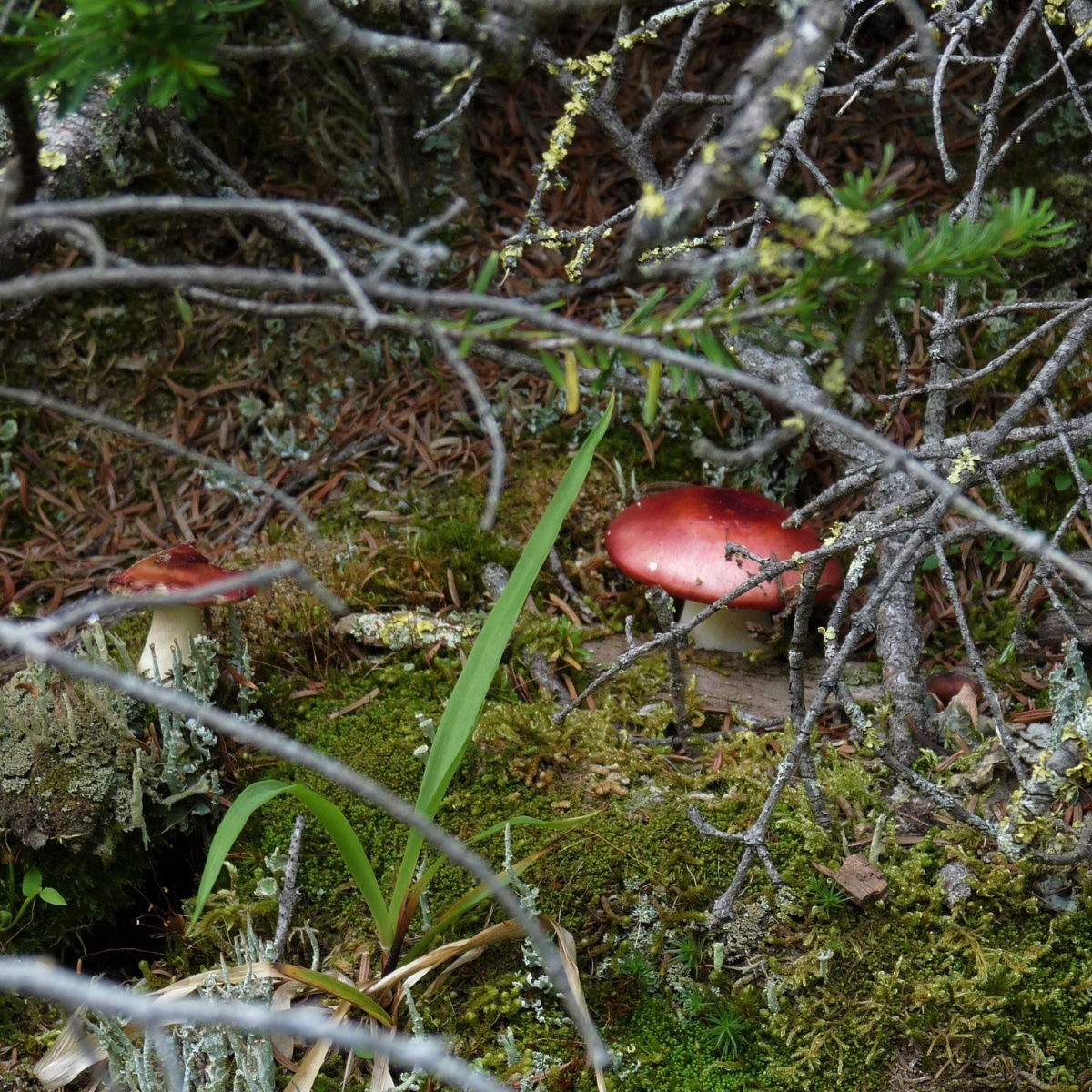
Where Does That Shrimp/Crab Smell Come From
The distinctive smell of the shrimp russula comes from Trimethylamine and trimethylamine N-oxide. These compounds also exist in actual seafood, which explains the authentic marine aroma. It is conjectured that the mushroom produces this smell to prevent insects and larger animals from eating it before it can release its spores.
For fish and other ocean animals, this compound, known as a stabilizer, plays a crucial role in preserving the structural integrity of proteins and nucleic acids. It acts as a shield and prevents the fish from dying under extreme water pressure — fish that leave deeper in ocean have higher levels of these compounds. These compounds also protect against elevated levels of urea (a compound in urine). As you can imagine, there is a lot of urine in the water from all the different sea animals. This compound shields the fish from the ill effects of being surrounded by it.
Common Questions About Shrimp Russula Mushrooms
How can you determine if a Russula mushroom is safe to eat?
To test if a Russula is edible, nibble a small part of the cap and place it on your tongue. Don’t worry, there are no deadly species in this family. Just be careful to only taste test and not swallow the raw mushroom. If it has a spicy, chili-like burn or tastes bitter, it’s not good to eat. However, it is likely safe to eat if it tastes mildly peppery or has a typical mushroom flavor.
Are there any poisonous Russula mushrooms?
Yes, some Russula mushrooms are toxic. They aren’t going to kill you, but they may make you very sick. The most notorious are the sickeners, which can cause illness if eaten but are not harmful if merely tasted and then spit out. Many Russula mushrooms have extremely peppery or bitter tastes, which makes them not good eating even though they’re not toxic.






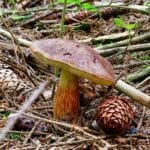
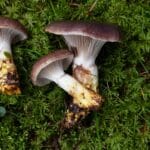
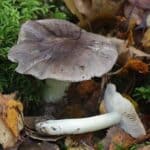
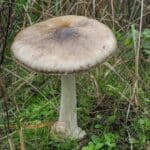
Leave a Reply